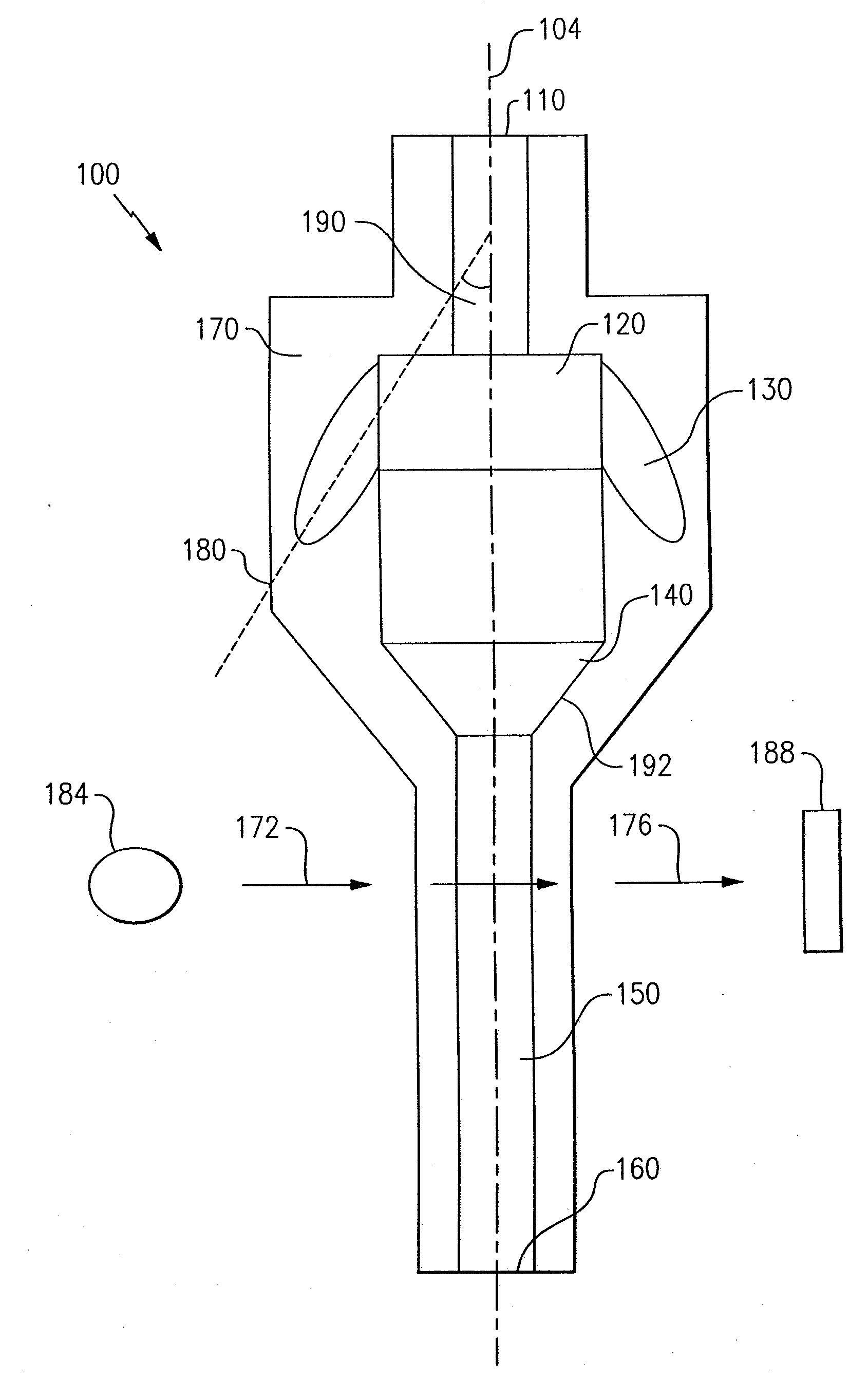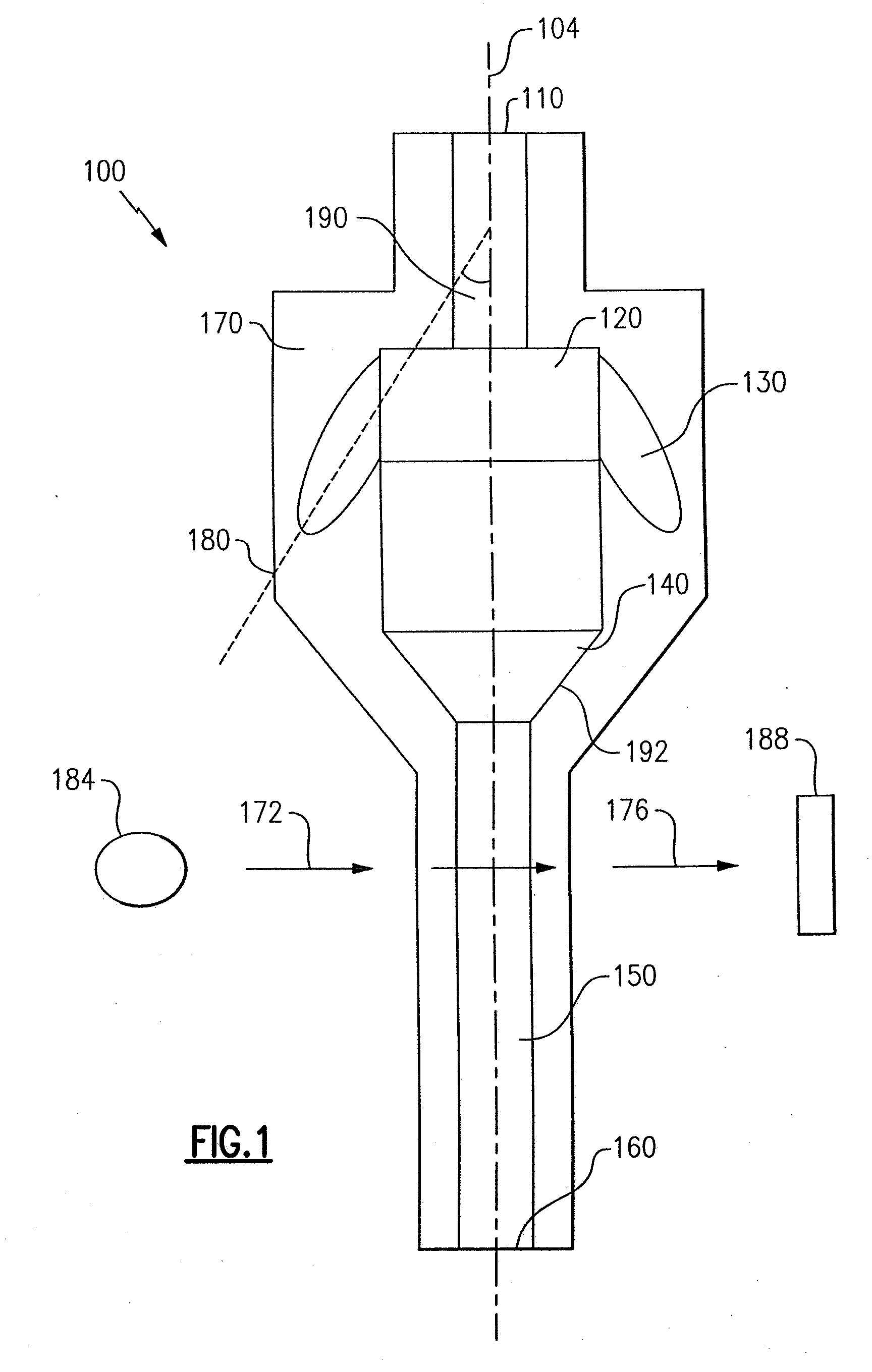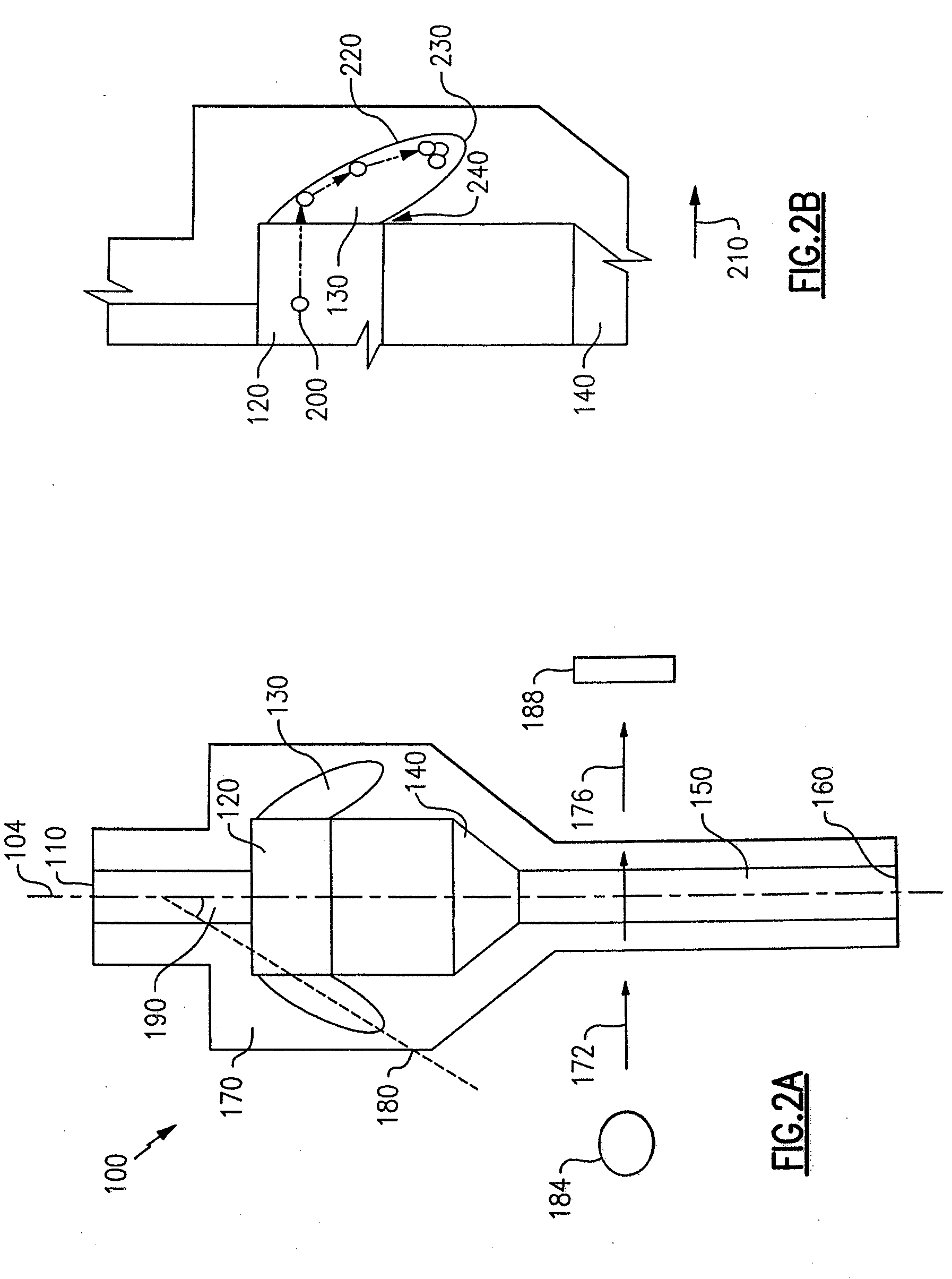Particle agglutination in a tip
a technology of agglutination and particles, applied in the field of particle agglutination in a tip, can solve the problems of inability lack of sensitivity for the detection of minute amounts of antigen, and subjectivity in interpretation, so as to achieve cost-effectiveness and the ability to perform an agglutination reaction
- Summary
- Abstract
- Description
- Claims
- Application Information
AI Technical Summary
Benefits of technology
Problems solved by technology
Method used
Image
Examples
example
Indirect and Direct Coomb's Test in a Probe Tip
[0122]A single capillary with a step in the flow channel was used to perform blood grouping and antibody screening (direct and indirect Coomb's testing, see FIGS. 9(a)-9(d)). First, a glass capillary 992 was linked to a short section of tubing 996 to create a tip with a step. The capillary had a volume of 25 μl with a length of 54 mm. The tubing 996 had a diameter of 3 mm and a length of 6 mm. A Hamilton syringe (not shown) was used to drive fluid flow. The following reagents were used in the assays:
Product Code (Ortho-ReagentClinical Diagnostics, Inc.)Anti-A BioClone ®711220ORTHO ® Anti-IgG Green716760Antibody Enhancement Solution718780ORTHO ® Anti-Kell715150AFFIRMAGEN ® (3% )719210SELECTOGEN ® (3% )719610ORTHO ® Coombs Control719810
Anti-A BioClone comprises ABO blood grouping reagents. ORTHO® Anti-IgG Green contains Anti-Human Globulin Reagents. ORTHO® Anti-Kell contains blood grouping reagents and AFFIRMAGEN, SELECTOGEN and ORTHO® C...
PUM
 Login to View More
Login to View More Abstract
Description
Claims
Application Information
 Login to View More
Login to View More - R&D
- Intellectual Property
- Life Sciences
- Materials
- Tech Scout
- Unparalleled Data Quality
- Higher Quality Content
- 60% Fewer Hallucinations
Browse by: Latest US Patents, China's latest patents, Technical Efficacy Thesaurus, Application Domain, Technology Topic, Popular Technical Reports.
© 2025 PatSnap. All rights reserved.Legal|Privacy policy|Modern Slavery Act Transparency Statement|Sitemap|About US| Contact US: help@patsnap.com



